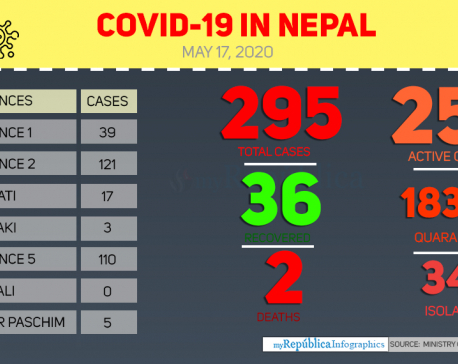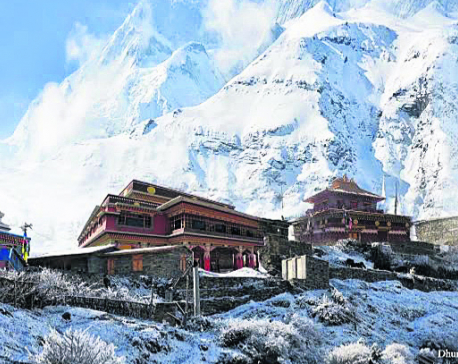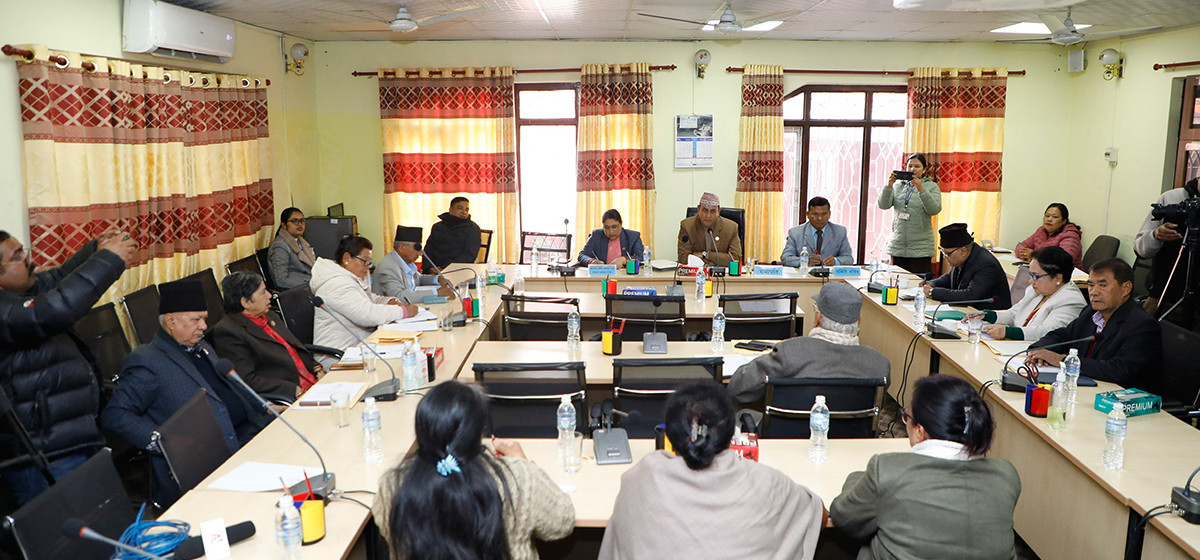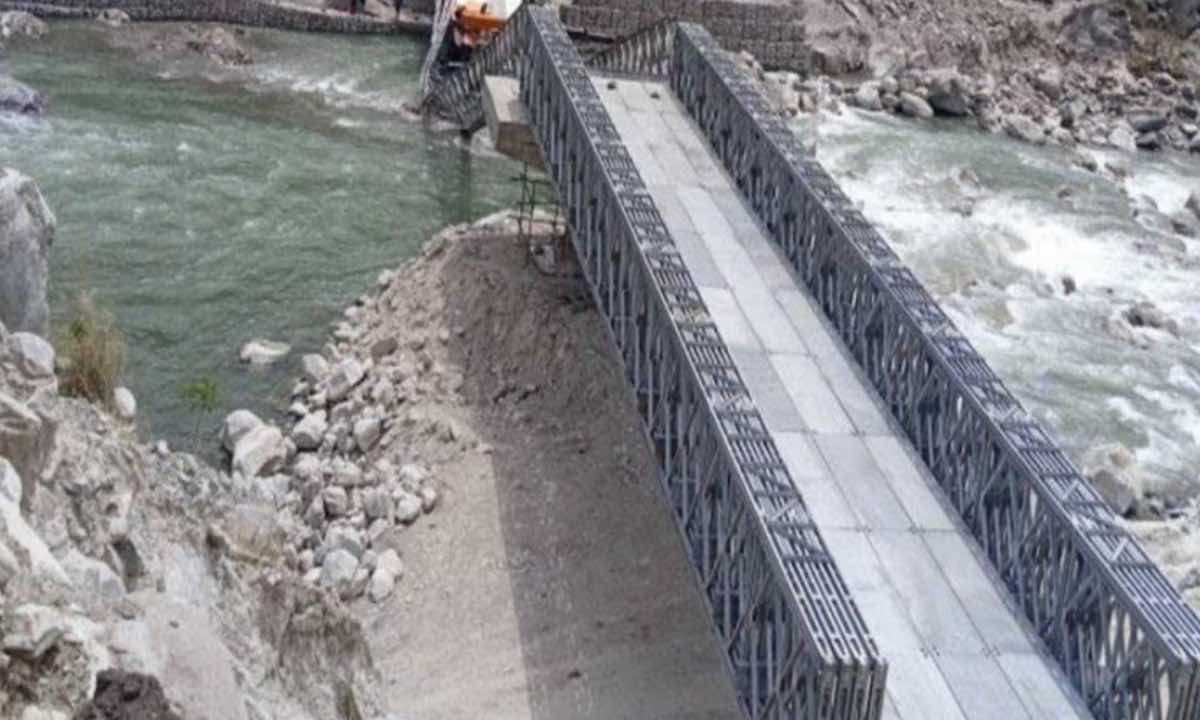
OR
How Nepal can make its cities smart
Published On: June 28, 2020 03:00 PM NPT By: Ambika P Adhikari and Keshav Bhattarai


Ambika P Adhikari and Keshav Bhattarai
Ambika P Adhikari is an Urban Planner based in Phoenix, Arizona, USA. Keshav Bhattarai is a Professor of Geography at the University of Central Missouri in Warrensburg, Missouri, USA.news@myrepublica.com
There are benefits of moving towards smart cities even if it is partial and applied only to selected services such as traffic and parking.
In the past two decades, the concept of smart city has been gaining popularity globally. While several cities such as Seoul, Singapore, Taipei, Barcelona, Chicago and Hong Kong have been implementing elements of smart city planning and design concepts, some city planners and civic leaders are also speaking about the benefits of adopting smart city notions for Nepal.
Smart city idea follows several recent innovations in land use and urban development. For example, in the United States, the idea of smart growth has become quite popular in the past three decades. Primarily aiming to curtail the ubiquitous urban sprawl, and making the urban development sustainable through efficient land-use decisions and higher density settlements, several jurisdictions in the country have officially adopted smart growth principles and regulations.
A smart-city approach makes use of information technology. Sensors, robotics and auto-control configurations use real time data to continually manage urban functions such as traffic, energy distribution, public amenities, and vehicular parking. Using real time data, a smart city helps to reduce pollution, promote clean energy use, and improve the overall urban physical environment. Although a smart city primarily improves service delivery and efficiency, it also helps to create a more sustainable and equitable urban development.
Smart city works by integrating information and communication technologies with urban infrastructure and service to optimize and enhance the quality and performance. This idea is based on the concept of “Internet of Things” (IoT) applications and communications networks. IoT connects physical elements of infrastructure, equipment, and physical facilities by the internet creating a larger system of virtual connectivity that provides real-time feedback mechanism allowing continuous monitoring, adjustment and manipulation of several activities related to service, infrastructure delivery, utilities and services. The IoT can make the connected system and each device smarter than it would have been separately or on its own.
How smart city works
A smart city is designed to improve the efficiency of urban functions. One example is the traffic, transit and transportation system which are managed and directed to avoid congestion based on what is happening on site, improve traffic flow, create an appropriate balance between the various modes of traffic, and to minimize the overall travel time for the urban users.
Another example is to optimize the energy grids and storm water systems in the city for improved efficiency and service by directing the flow of energy and storm water capacity as per the real time need in different locations. The demand management is achieved through a centrally connected system that reads the demand as captured by the sensors deployed across the city. Optimization of energy system will synchronize the supply and demand, and help reduce the carbon emissions by cutting down the waste of energy.
Public space is an essential component of any smart city to bring people together to socialize, recreate, and work. Public gatherings help to attract people to the city, build relationships, and spur innovation and new ideas that fuel a city's economic growth. Efficient use of open space and public parks help to optimize the investments made in streetscapes, plazas, parks, and greenways and the city as a whole.
According to a research conducted in France, a person spends almost four years in lifetime while looking for a parking space. Efficient parking system will help in minimizing search time and reduce vehicular emissions. Sensors are used in parking areas to monitor parking capacity and availability of spaces and increase fee revenue and create jobs. This information is transmitted electronically to a central platform that evaluates the data and communicates with the costumers.
Smart cities focus primarily on the increased surveillance capacity with highly networked cameras and sensors. These surveillance technologies are embedded into the urban infrastructure to watch different activities in the urban areas. They use real-time data to improve the management of pedestrian and vehicle traffic, weather preparedness and energy use. However, more cameras and sensors can also infringe on people’s privacy rights.
A city contemplating to become smart should conduct a cost-benefit analysis. The costs will include investments in digital infrastructure, high speed internet, fiber optics cables, and wireless internet systems. Further, digitizing components e.g., transportation, home energy systems, parks use, sidewalk use, traffic lights, water supply and waste water sensors will add to the costs. The benefits would include the savings gained in efficiency, reduced traffic congestion, optimal use of parks, parking areas, sidewalks, streetlights, water supply, sewerage and other services. While loss of personal privacy can be a social cost, enhanced sustainability could be a social benefit.
Creating Smart Cities in Nepal
Nepali cities still face may planning-related challenges. As the basic urban services and infrastructure in most Nepali towns and cities are not up-to-date and effective, the idea of creating a smart city sometimes looks like a daydream. One can frequently find social media postings mocking the talk of smart city by the municipal leaders and juxtapositioning the images of muddy streets, broken sidewalks, and large potholes on the road in Kathmandu.
Most Nepali cites lack adequate infrastructure and services. In addition to highly congested roads, lack of sidewalks, and severe dearth of open spaces, many cities have limited urban services such as water supply, sanitation, drainage, and parking. In many cities, surveillance cameras are non-existent. Overall, the urban management is also generally considered needing improvement. The energy supply, broadband and other technology services are often not well-managed. Some dramatic examples can be seen in the overhead electrical and data cable lines, which appears to be completely muddled up, knotted and messy.
However, there are benefits of moving towards smart cities even if it is partial and applied only to selected services such as traffic and parking. Perhaps the first area that some large Nepali cities can adopt smart city concepts is in real-time traffic management. In place of the traffic signals that operate on pre-programmed cycle for fixed duration, smart traffic signals can sense the actual traffic movement at the intersection and adjust immediately to optimize the traffic flow. The human traffic police sometimes do that in the street of Kathmandu, but it is an unsafe and tedious task. Smart traffic control system can automatically manage the traffic and help it flow better.
Nepali urban leaders and planners can also review and identify a series of urban components which can offer ideas to create the building blocks of a smart city. These will likely include transportation, street lighting, energy use in public buildings, utilization of public amenities, parking lots, and making urban services more efficient.
Way ahead
Many smart cities have not functioned as envisioned. For example, work on Masdar City in the United Arab Emirates (UAE) began in 2008. Planned as a smart and sustainable city, it is only partially occupied and the initially planned goals such as reduction in carbon emission, and increase in mobility have not met the goals. Similarly, the multi-billion-dollar Sidewalk Labs funded by the Alphabet Company to create a smart sidewalk project in the waterfront of Toronto in 2017 ran into several problems. However, the residents opposed the sensors and high-tech implementation that could compromise personal information, and the project was abandoned. Several other smart city projects were also considered to be overpromised and under-delivered.
Development of a smart city is an evolutionary process. Cities will begin to adopt increasing number of smart elements as they move towards a digital, robotic and artificial intelligence configuration. It appears that some basic elements of smart city can perhaps be initially implemented in selected Nepali cities which can benefit the residents. The feasible elements for smart functions can include traffic management, parking management, and energy transmission.
Ambika P Adhikari is an Urban Planner based in Phoenix, Arizona, USA. Keshav Bhattarai is a Professor of Geography at the University of Central Missouri in Warrensburg, Missouri, USA.
You May Like This

Health ministry confirms three new COVID-19 cases, number of total cases reaches 295
KATHMANDU, May 17: Nepal reported three new cases of COVID-19 on Sunday evening, taking the national tally to 295. ... Read More...

Dhurmus, Suntali to build ‘a Nepal within Nepal’
KATHMANDU, June 5: After successfully completing three settlement projects for earthquake victims and other communities, the actor couple Sitaram Kattel (Dhurmus)... Read More...

Nepal vs Kenya: Five crucial things Nepal looks for second match
KATHMANDU, March 12: Nepal is taking on Kenya on Monday in the second match of the ICC World Cricket League... Read More...
Just In
- State Affairs and Good Governance Committee meeting today
- Gold items weighing over 1 kg found in Air India aircraft at TIA
- ACC Premier Cup semi-final: Nepal vs UAE
- Sindhupalchowk bus accident update: The dead identified, injured undergoing treatment
- Construction of bailey bridge over Bheri river along Bheri corridor reaches final stage
- Taylor Swift releases ‘The Tortured Poets Department’
- India starts voting in the world’s largest election as Modi seeks a third term as prime minister
- EC seeks cooperation for free and fair by-election



















Leave A Comment